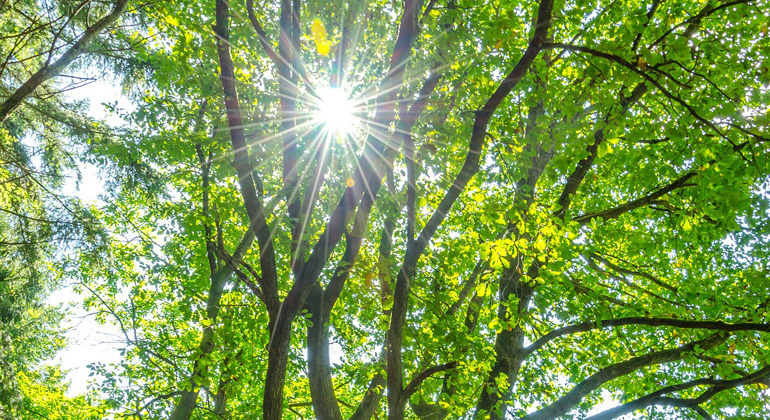Local cooling provided by broad-leaved trees in Europe
Broad-leaved trees could help to reduce some of the adverse local impacts of climate change.
In particular, during hot temperature extremes, broad-leaved trees reduce land-surface temperatures more effectively than needle-leaved trees, according to a study led by ETH Zürich, WSL and MeteoSwiss.
Many people have experienced the cooling effect of forests during hot summer days. However, different types of forests do not provide the same amount of cooling. Researchers of ETH Zürich, the Swiss Federal Institute of Forest Snow and Landscape Research (WSL), and MeteoSwiss showed that broad-leaved trees reduce land surface temperatures during hot extremes more effectively than needle-leaved trees. This finding is based on a statistical analysis of high temporal and spatial resolution satellite remote sensing observations over Europe. Depending on region, the land surface temperatures of broad-leaved forests are between 0.5-1.8°C lower than the temperature of coniferous forests.
Broad-leaved trees evaporate and reflect more
“The cooling effect can partly be explained by a higher albedo of broad-leaved trees in comparison to needle-leaved trees”, explains Jonas Schwaab, Postdoc at the Institute of Atmospheric and Climate Science (IAC). “This means that broad-leaved trees reflect more sunlight and hence less energy at the earths’ surface is converted into heat”. Several studies have shown that broad-leaved trees evaporate more water during growing season than needle-leaved trees, which leads to further cooling. However, the researchers point out that it is important to better understand the causes of the observed cooling effect. “While we detected a clear beneficial temperature effect of broad-leaved trees compared to conifers in general, differences between individual tree species could also be substantial”, emphasizes Edouard Davin, who leads the CLIMPULSE project under which the present results were published.
More broad-leaved trees for climate adaptation?
The recently published results are relevant for climate adaptation measures. For example, it could be useful to increase the fraction of broad-leaved trees in forests or in cities to achieve a local cooling effect during hot extremes. “Increasing the broad-leaved tree fraction could be particularly useful in spruce-monocultures that are not well adapted to local conditions”, says co-author Peter Bebi, leader of the Mountain Ecosystems Research group at SLF/WSL. However, when adapting forest management, it is crucial not to consider only the climatic impact of different management practices, but also other factors such as the effect on biodiversity and protection against natural hazards.
- Schwaab, J., Davin, E.L., Bebi, P. et al. Increasing the broad-leaved tree fraction in European forests mitigates hot temperature extremes. Sci Rep 10, 14153 (2020). doi: 10.1038/s41598-020-71055-1








